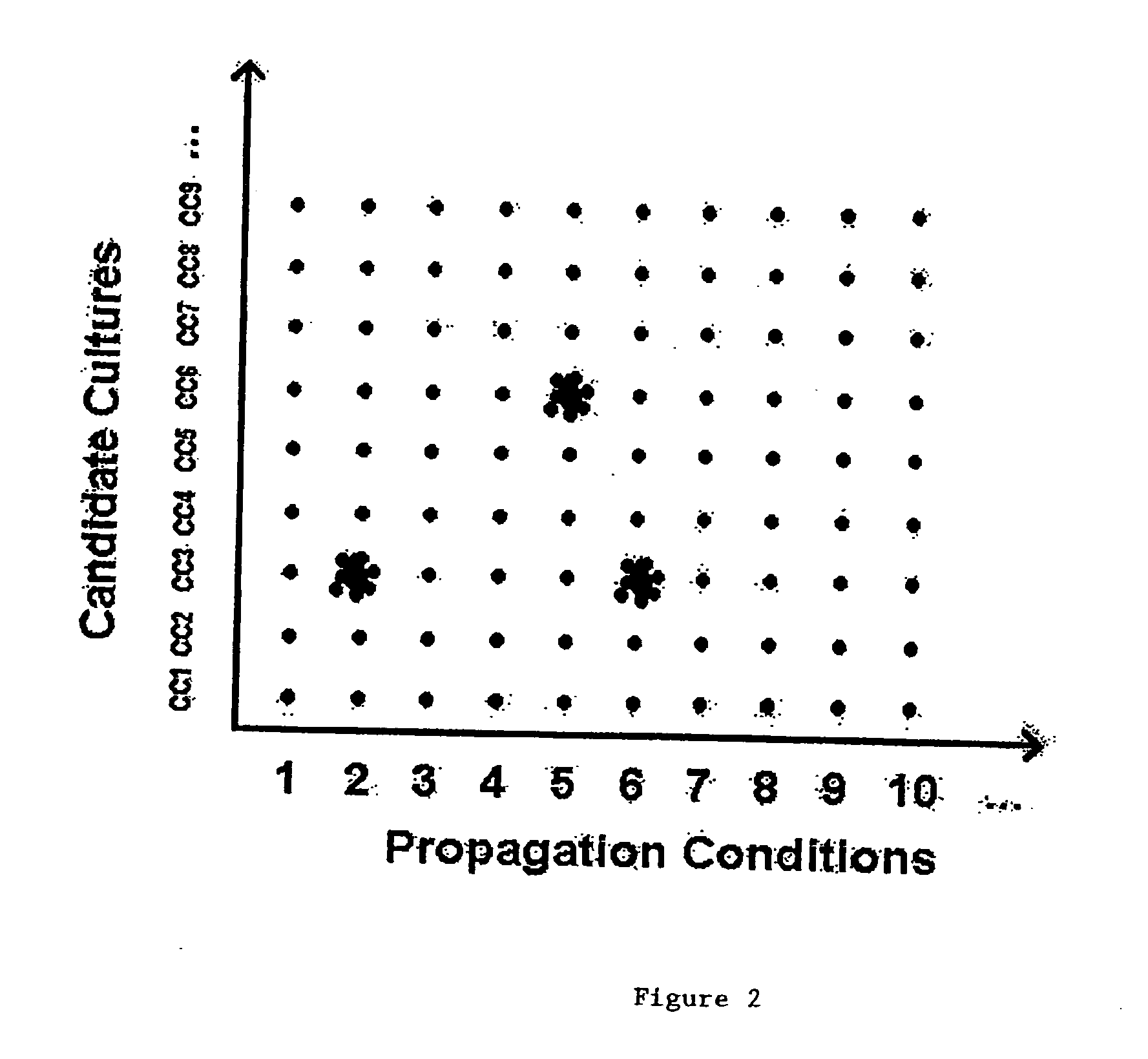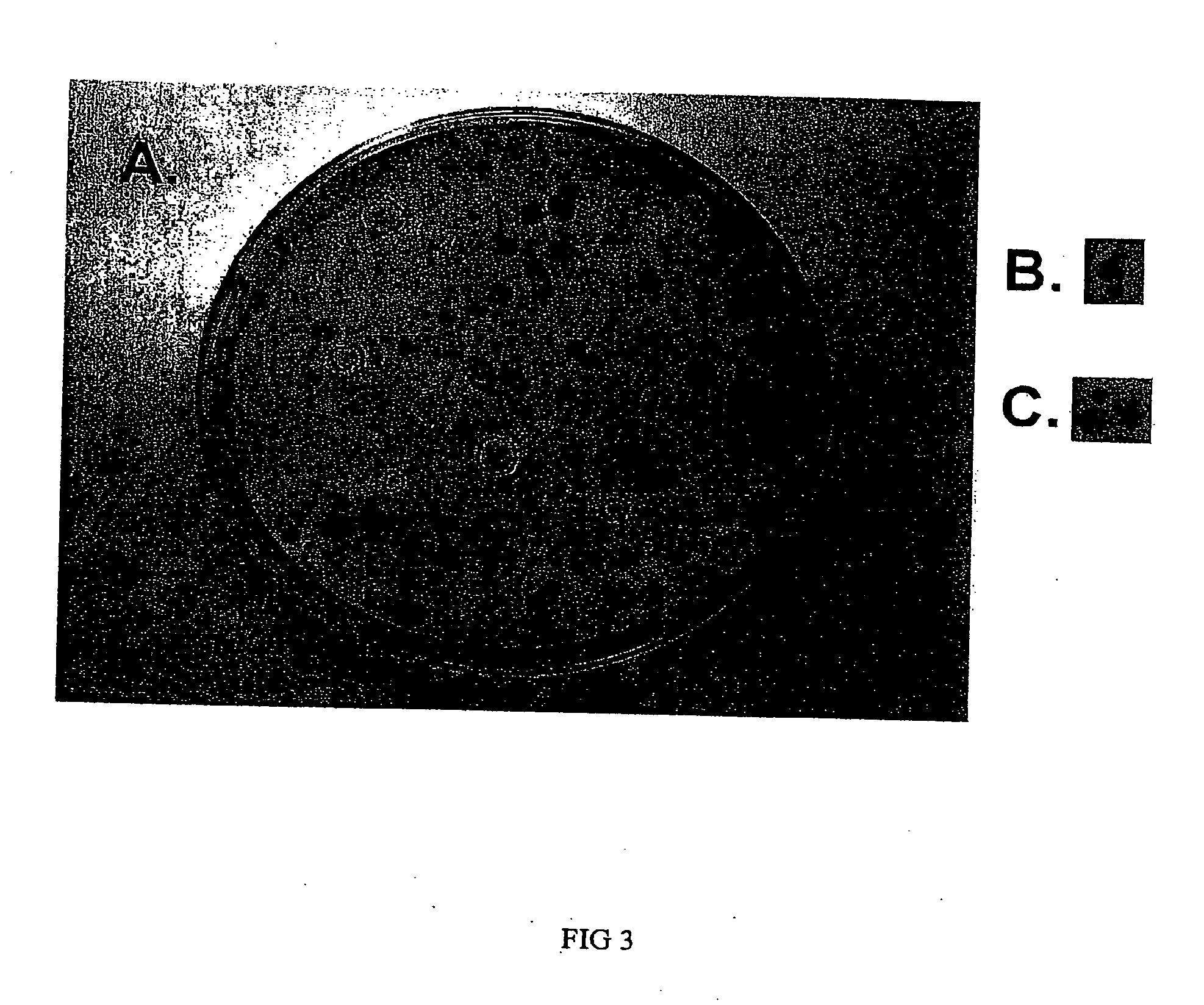Methods to accelerate the isolation of novel cell strains from pluripotent stem cells and cells obtained thereby
a technology of pluripotent stem cells and cell lines, applied in the field of methods to accelerate the isolation of novel cell lines from pluripotent stem cells and cells obtained, can solve the problems of limited success in most primary cultures, inability to determine, and low cloning efficiency, so as to increase the number of proliferating cells, and increase the number of cells
- Summary
- Abstract
- Description
- Claims
- Application Information
AI Technical Summary
Benefits of technology
Problems solved by technology
Method used
Image
Examples
example 0.1
[0208]hES cells are grown to form embryoid bodies (EB) (see U.S. application No. 60 / 538,964, filed Jan. 23, 2004; Ser. No. 11 / 186,720, filed Jul. 20, 2005; PCT application nos. PCT / US05 / 002273, filed Jan. 24, 2005; PCT / US05 / 25860, filed Jul. 20, 2005, the disclosures of which are hereby incorporated by reference) and said embryoid bodies are plated in standard tissue culture vessels in the presence of DMEM media supplemented with 10% fetal bovine serum to obtain a heterogeneous population of cells. The media of said cultures is collected after 24 hours and the cultures are refed. The collected media are pooled, filtered through a 0.2 micron sterile filter and stored at 4° C. as conditioned medium. After a total of 10 days of differentiation, the differentiated cells are plated at limiting dilution, photographed to document the cell number in each well as well as the differentiated state of the cell, and fed the conditioned medium with biweekly refeeding, and cultured for two weeks i...
example 2
[0210]hES cells are grown to form embryoid bodies (EB) (see U.S. application No. 60 / 538,964, filed Jan. 23, 2004; Ser. No. 11 / 186,720, filed Jul. 20, 2005; PCT application nos. PCT / US05 / 002273, filed Jan. 24, 2005; PCT / US05 / 25860, filed Jul. 20, 2005, the disclosures of which are hereby incorporated by reference) and said embryoid bodies are plated in standard tissue culture vessels in the presence of DMEM media supplemented with 10% fetal bovine serum to obtain a heterogeneous population of cells. The media of said cultures is collected after 24 hours and the cultures are refed. The collected media is pooled, filtered through a 0.2 micron sterile filter and stored at 4° C. as conditioned medium. After a total of 10 days of differentiation, the differentiated cells are plated at limiting dilution, photographed to document the cell number in each well as well as the differentiated state of the cell, and fed the conditioned medium with biweekly refeeding, and cultured for two weeks in...
example 3
[0212]hES cells are grown to form embryoid bodies (EB) (see U.S. application No. 60 / 538,964, filed Jan. 23, 2004; Ser. No. 11 / 186,720, filed Jul. 20, 2005; PCT application nos. PCT / US05 / 002273, filed Jan. 24, 2005; PCT / US05 / 25860, filed Jul. 20, 2005, the disclosures of which are hereby incorporated by reference) and said embryoid bodies are plated in standard tissue culture vessels in the presence of DMEM media supplemented with 10% fetal bovine serum to obtain a heterogeneous population of cells. The media of said cultures is collected after 24 hours and the cultures are refed. The collected media is pooled, filtered through a 0.2 micron sterile filter and stored at 4° C. as conditioned medium. After a total of 10 days of differentiation, the differentiated cells are plated at limiting dilution, photographed to document the cell number in each well as well as the differentiated state of the cell, and fed the conditioned medium with biweekly refeeding, and cultured for two weeks in...
PUM
| Property | Measurement | Unit |
|---|---|---|
| time | aaaaa | aaaaa |
| time | aaaaa | aaaaa |
| density | aaaaa | aaaaa |
Abstract
Description
Claims
Application Information
 Login to view more
Login to view more - R&D Engineer
- R&D Manager
- IP Professional
- Industry Leading Data Capabilities
- Powerful AI technology
- Patent DNA Extraction
Browse by: Latest US Patents, China's latest patents, Technical Efficacy Thesaurus, Application Domain, Technology Topic.
© 2024 PatSnap. All rights reserved.Legal|Privacy policy|Modern Slavery Act Transparency Statement|Sitemap



